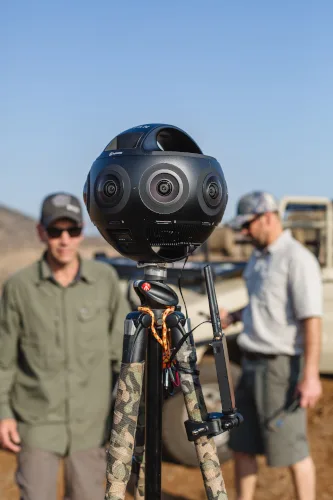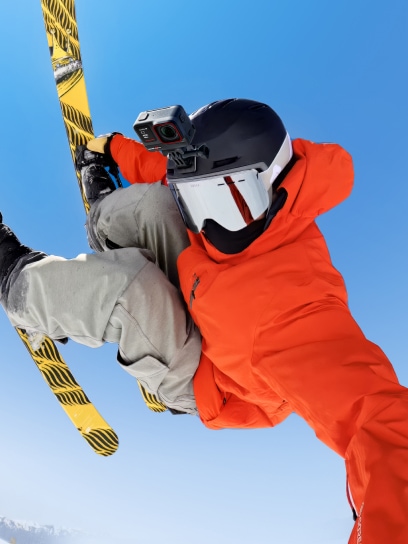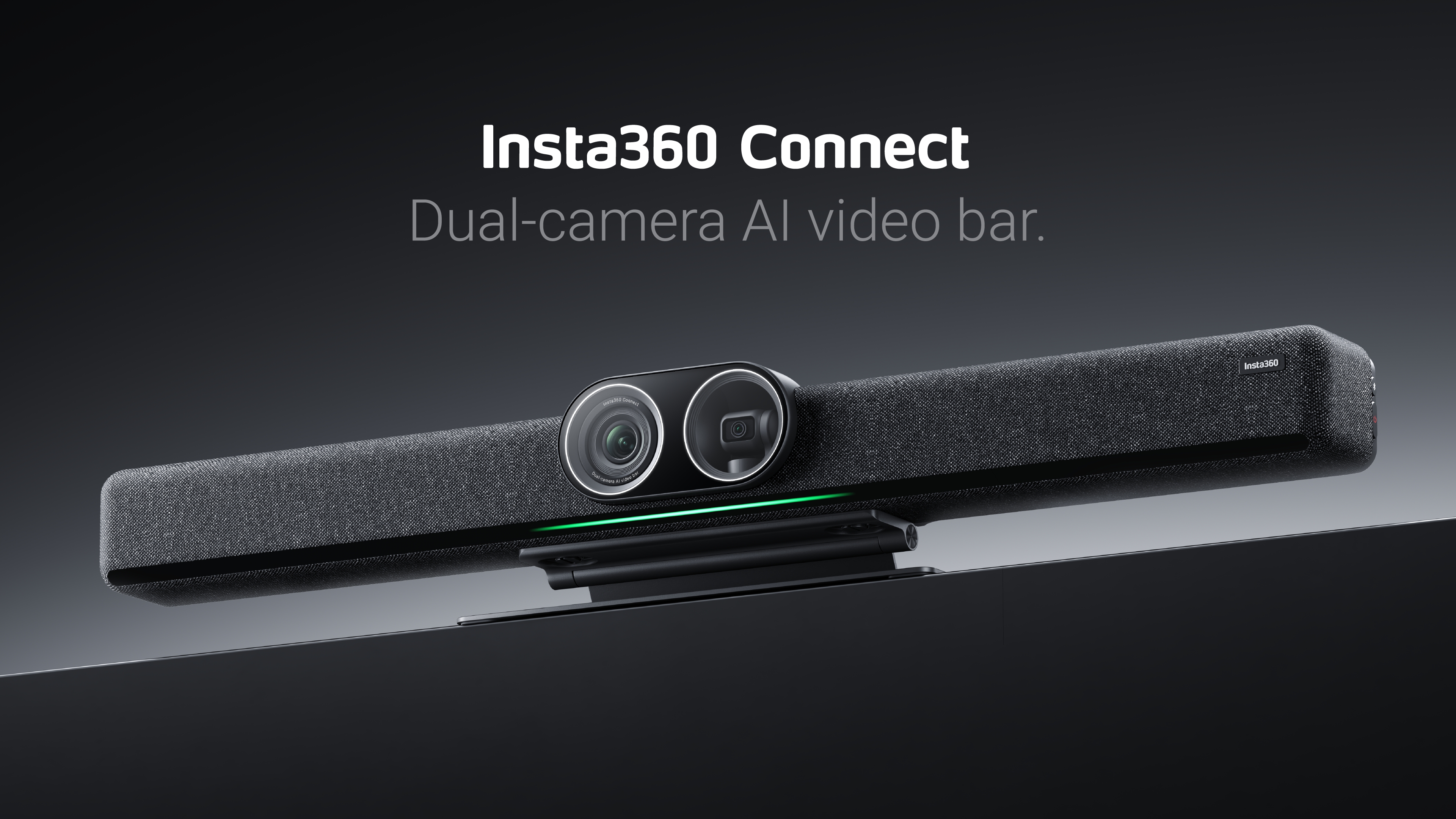Have you ever dreamed of looking a lion, elephant or rhino in the eye?
It’s often impossible to encounter these animals up close in the wild without endangering your or the animal’s life. But now, VR nature documentaries are bringing awe-inspiring animals within the reach of anyone with a VR headset. Viewers can now see these animals up close in their natural habitat without ever leaving their living room.
So, what are the secrets to filming a successful VR nature documentary? To start, you’ll need a durable camera that can withstand extreme temperatures and even an animal bite or two.
We interviewed Telmo dos Reis, founder of VR Capture, a virtual reality studio in South Africa, to get his tips on filming VR content in the African savannah. Their latest VR nature documentary series “Close Encounters” allows viewers to stand eye-to-eye with African wildlife and was filmed entirely on Insta360 cameras.
Could you briefly introduce VR Capture and your latest VR nature documentary?
My name is Telmo dos Reis, I create cinematic virtual reality content and specialize in 360º video production. Over the last five years, I have worked on numerous VR projects, from content for various commercial clients to original wildlife documentaries. I am a conservationist by heart and love to mix my technical production skills with projects to help promote the conservation of nature and wildlife.

Close Encounters is a 360º cinematic VR nature documentary series featuring three episodes: Elephants, Lions and Rhinos. This project was created in collaboration with VeeR and is available to view on their platform with a VR headset. The aim of this project is to create a sense of connection between the audience and wildlife, bringing greater awareness to the plight of these endangered animals.
At VR Capture, we capture reality at the highest resolutions to use in XR projects. Our team has pioneered cinematic 360º video production throughout Africa and our mission is to produce deeply immersive experiences for a global audience. We utilize the latest in cinematic 360º and volumetric video technologies to capture and deliver highly engaging virtual reality experiences.
These following tips for filming VR nature documentaries in the wild only apply to filming African savannah animals. All species are different and will need their own approach to filming them up close.
1. Safety first
If you misread the situation and animals, you could be putting yourself and the crew at risk. The animal can react in a defensive and potentially dangerous way. Be respectful of their space and extremely careful when filming.
Have a trained wildlife specialist on your team to observe the animals behavior and temperament. Be prepared for any medical emergency that could happen if things go very wrong.
We are fortunate enough to have never had a bad incident with an animal, but there have been a few close calls. It is extremely intimidating, and at times scary, to have an animal stare you down or charge you from close proximity.
2. Be patient
Nature and animals aren’t paid talent. They won’t just perform on cue for your film. Be patient and wait for the perfect moment to move in and place your camera.

3. Observe and study the animals behavior
It is important to have a wildlife specialist on the team. Picking a good local ranger guide is essential too, as they often know specific animals, their preferred areas and their personalities.
We try to spend a considerable amount of time with each animal that we are wanting to film, to learn and anticipate their behavior. Each animal is an individual. Just because you are filming a lion, it is not going to behave like the last lion you filmed. Some might be more aggressive than others and each animal needs to be approached in a respectful and un-threatening way.
You need to read the situation that is presented to you first, study the animal's behavior and its mood before simply driving towards it and placing a VR camera in its immediate area. Otherwise, most animals, even the more vicious ones, will often just run away.

4. Pounce on opportunities when they arise
You never know what can happen while you are out in the bush. You need to constantly be on standby or you could miss a great unique shot. Be ready to deploy your camera when a random, unplanned opportunity arises to capture something special. A lot of my best shots have happened this way.
When we are ready to film, we typically drive ahead of the animals and place cameras in strategic points. Then we immediately move completely out of the area and wait for the animal to approach.
Insta360’s Farsight live monitoring system makes filming a VR nature documentary a lot easier. For the first time, we can place our cameras out in the bush, go hide our vehicles and then remote monitor to see what the animals do and when they move closer into shot.
In the past, we used to have to hope that action would happen around the camera, before the batteries died or the SD cards filled up. Now we can press record or change settings when the animals come closer or the light changes.

5. Pack like a pro
Make sure you pack like a pro and always know where your gear is in the vehicle. Make sure you have enough batteries, memory cards and miscellaneous rigging gear with you all the time. It will be a long day in the bush, so you will need to pack enough water to stay hydrated and have nutritious snacks.
Insta360 cameras have become our weapon of choice. There are many things that make Insta360 cameras better than their competitors. The internal batteries system is superior to other brands, the software is easy to use and quite stable and the cameras perform well under high temperatures.
The cameras are light and very robust for filming a VR nature documentary. Our Insta360 cameras have been knocked around by wild animals and they still work perfectly well. On the last shoot alone, they have literally been chewed on by lions, violently kicked over by elephants and dropped by wild dogs… much more has happened in the past.
I have tried all types of 360º cameras over the years. Initially, I was using 3D printed rigs with GoPros strapped around them. Back then, everyone in the industry was hoping for a standalone 360º video camera so you didn’t have to deal with multiple cameras.
When Insta360 released Insta360 Pro 1, capable of recording 6K stereo and 8K mono, I got my hands on one straight away. The ease of use was a whole different filming experience compared to using custom GoPro rigs. I have predominantly used Insta360 cameras ever since and most recently Insta360 Titan for this project.
In our opinion, Insta360 Titan is the best 360 VR camera out at the moment. With the Micro Four Thirds sensors, dynamic range, color depth and overall resolution, it simply makes for better image quality.

How have audiences liked Close Encounters so far?
The audience feedback has been extremely positive at this stage. The series was initially released in VR cinemas around China and quickly became one of the most popular choices. People were in awe with the close interaction shots and their proximity to the animals. They said that it was beautiful to watch and enjoyed the park ranger and narrator’s guidance throughout the VR experience.
This collaboration was so successful that we are looking at adding more episodes to the Close Encounters collection now.
Keen to keep up to date on Insta360 stories? Keep an eye on our blog and sign up for our mailing list. You can also contact our Enterprise team directly to see how 360 cameras can benefit your business.





































